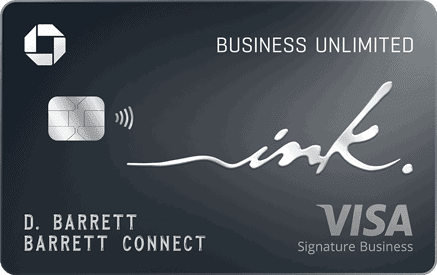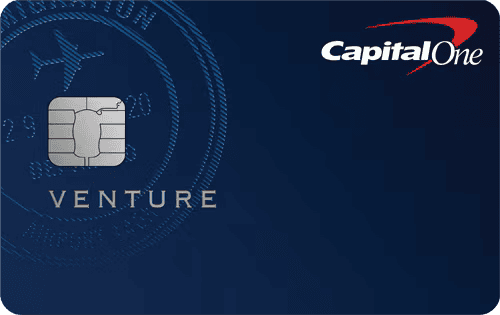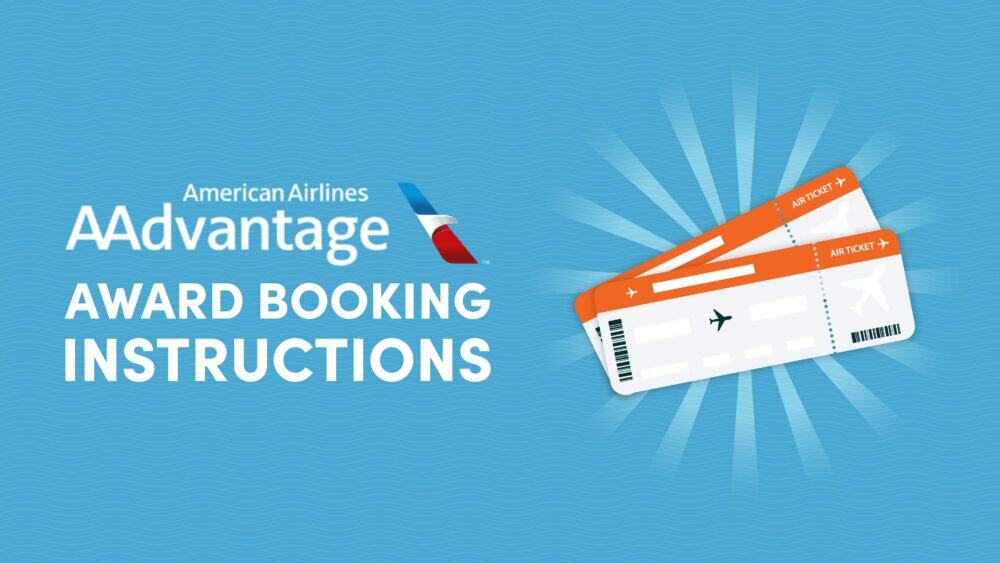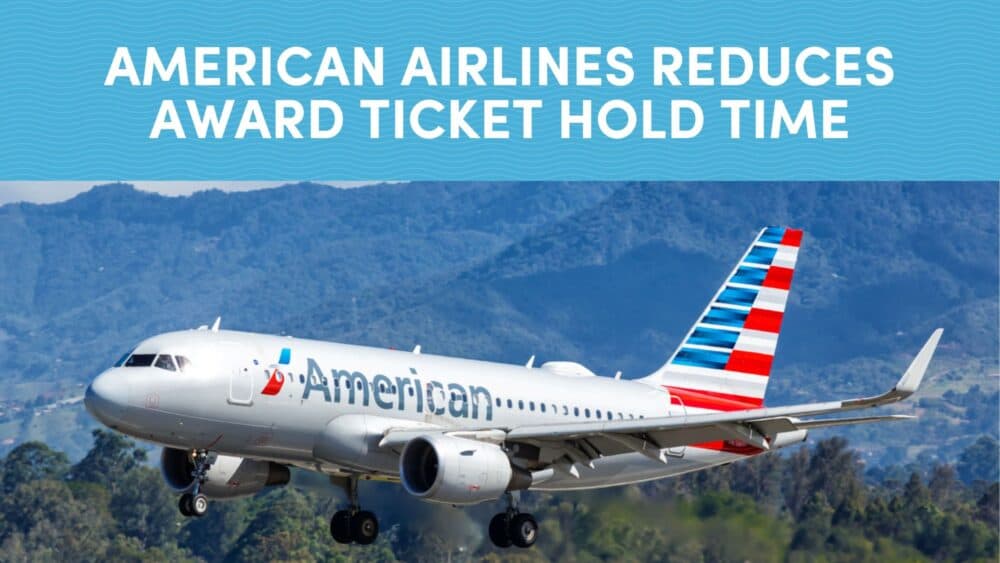
10xTravel is part of an affiliate sales network and receives compensation for sending traffic to partner sites, such as CreditCards.com. This compensation may impact how and where links appear on this site. This site does not include all financial companies or all available financial offers. Terms apply to American Express benefits and offers. Enrollment may be required for select American Express benefits and offers. Visit americanexpress.com to learn more.
Note: Some of the offers mentioned below may have changed or may no longer be available. The content on this page is accurate as of the posting date; however, some of our partner offers may have expired. You can view current offers here.
Hey Travel Junkies,
Here at 10xTravel we teach you how to travel using points and miles earned from credit cards. The more points and miles you earn, the more you can travel.
Recently, Bask Bank launched new product that can help you earn miles without opening a new credit card. It’s an online bank that offers a savings account that earns American AAdvantage miles instead of interest.
Let’s take a deeper dive into this new earning opportunity to see if it is really worth it (hint: it probably isn’t as great a deal as it initially seems).
Before we get into the details, I need to provide a disclosure for what you’re about to see. There will be math ahead. Consider yourself warned!
What is the Bask Bank Savings Account?
Let’s take a quick look at the basics of the Bask Bank Savings Account.
It’s a traditional, FDIC insured savings account but, instead of paying you interest on your money deposited, Bask Bank pays you in American miles. There are no fees for opening an account and no general maintenance fees.
Bask Bank isn’t the only opportunity to earn miles from a bank account. Bank Direct has had a program with AA for years. In fact, both Bask Bank and Bank Direct are divisions of Texas Capital Bank, N.A.
To keep it short (and don’t worry, more in-depth comparisons will be coming later), the Bask Bank Savings Account earns more miles than Bank Direct’s account.

How to Earn AAdvantage Miles with Bask Bank
There are a lot of opportunities to earn AAdvantage miles with Bask Bank. Right now, you have the standard earn rate and two bonus offers available. Let’s look at each of these offers and the base earnings rate in more detail.
Earnings Rate
You’ll earn 1X American mile for every dollar saved annually in your Bask Bank savings account. With no caps, you can earn an unlimited amount of American miles.
Miles will be deposited into your AAdvantage account once per month, based on your monthly average balance. If you deposit $5,000 into an account, and maintain that balance for the entire month of March, you’ll earn 425 miles (5,000 x 31/365). Shorter months will earn fewer miles, but it will average out to 5,000 if you maintain the same balance for one year.
Any withdrawals made will affect your average monthly balance, and therefore will lower the amount of miles earned that month. If you deposit more money, your average monthly balance will increase, resulting in more American miles earned.
Balance Bonuses
In addition to the new account bonus, Bask Bank is offering tiered bonuses based on the minimum balance in your account every 180 days. Balance bonuses are separate from the new account bonus, and will apply to new accounts opened by March 31, 2020.
Stick with me as we walk through this, and refer to the following chart as an overall reference guide.
| Balance Tier | Minimum Account Balance | Bonus Miles Awarded Every 180 Days | Maximum Bonus Mile Award |
|---|---|---|---|
| 1 | $25,000 | 5,000 Miles | Up to 10,000 Miles |
| 2 | $50,000 | Tier 1 Award (5,000) + 5,000 Miles for a total of 10,000 Miles | Up to 20,000 Miles |
| 3 | $100,000 | Tier 2 Award (10,000) + 10,000 Miles for a total of 20,000 Miles | Up to 40,000 Miles (Maximum Offer Award) |
Table courtesy of Bask Bank
There are three tiers of bonuses. Tier one requires a $25,000 minimum account balance, tier two requires $50,000, and tier three requires $100,000.
Each tier earns a different bonus amount. Tier one earns 5,000 miles, tier two earns 10,000 miles, and tier three earns 20,000 miles.
Additionally, each tier has a maximum amount of miles that you can earn. Tier one caps at 10,000 miles, tier two caps at 20,000 miles, and tier three caps at 40,000 miles.
If you change tiers, you can earn additional miles. If you start off depositing $25,000 and earn 5,000 miles in the first 180 days but then increase your total balance to $50,000, you can earn 15,000 miles in total (5,000 from tier 1 in the first 180 days, and then 10,000 for being in tier 2 for the second 180 days).
However, it isn’t as rosy going backwards. If you start off depositing $100,000, you’ll earn 20,000 miles after the first 180 days. If you then withdraw $1 so your balance is $99,999 for the second 180 days, you’ll drop into tier 2. Remember, these are minimum balances, not average daily balances. Since you’ve already earned 20,000 miles, and the maximum bonus miles for tier 2 are 20,000, you won’t earn any additional miles.
Feedback Bonus
The feedback bonus is the easiest to understand, and probably the easiest bonus to earn. After opening your account, you can navigate to your “Welcome Checklist” and select “provide app feedback.” After providing feedback, you’ll earn an automatic 1,000 AAdvantage miles. That’s it! The feedback bonus is available until June 30, 2020.
Stacking the Bonuses
The good news is that all three of these bonuses stack, plus you’ll get the standard earning rate of 1X mile per dollar saved per year.

Bonuses per minimum balance, the sign-up bonus is no longer available as of March 1st (image courtesy of Bask Bank)
For depositing just $1,000 and completing the feedback bonus, you’ll earn 7,000 miles. If you deposit (and don’t withdraw) $100,000, the minimum amount for the highest bonus, you’ll earn 146,000 AAdvantage miles in the first year.
Tax Implications
Because this is a savings account, you will be taxed on the value of the miles earned as interest. Bask Bank values the miles earned at 0.4 cents per mile, so at the end of the year, you should receive a 1099-INT for 0.4 times the number of miles you earned. If you earn 100,000 miles, for example, you’ll receive a 1099-INT for $400.
Is the Bask Bank Savings Account a Good Deal?
Alright, so here is where we are going to dig deep and see if this is a good deal or not. Math incoming.
TL;DR – This is a pretty good deal, if you put a high value on earning miles versus cash.
There’s a lot of marketing surrounding the Bask Bank Account comparing it to the typical interest earned on savings accounts. The average savings account earns 0.09% interest, according to Bask Bank. If this is the type of account you currently have, you’ll earn $27 in interest with $30,000 deposited per year.
Comparatively, this same amount could earn 30,000 American miles at Bask Bank, before you even consider any of the bonuses. You will easily be able to get more than $27 in value from the miles, so surely this must be a good deal, right?
Instead of relying on the marketing information, let’s be a bit more analytical about this.
Bask Bank Compared to Traditional Savings Accounts
First, if you’re considering switching to Bask Bank, the earnings rate should be compared not to the ‘average’ savings rate across all banks, but instead to interest rates readily available out there on the market today. If you’re already switching banks, let’s make sure you’re switching to get the best deal.

A quick google search shows a Citi Accelerate Savings Account at 1.85% interest, Great Southern Bank offering 1.95%, or Redneck Credit Union (yes, it’s a real thing and yes, it’s a legitimate FDIC insured bank) earning 2.25% on your first $10,000 in their checking account.

For the sake of this article, I’ll use Citi’s 1.85% interest rate. Citi is a big national bank, so some people would be more comfortable switching to Citi over either of the other options. The service fee on the account is waived with a balance of over $500, making it fee-free just like Bask Bank.
So, now we’ve established what type of interest rate you should be comparing to Bask Bank. Next, we need to evaluate what the opportunity cost is for each bonus tier.
I’m going to make the following assumptions:
- You’re getting every possible bonus in your tier; and
- You put in the minimum amount to meet those bonus requirements.
Why am I making these assumptions?
Well, because both will earn the maximum amount of miles per dollar deposited. If the analysis shows that Bask Bank isn’t as good as the Citi interest rate at the maximum miles you could earn in that tier, then it wouldn’t beat Citi at fewer miles in that tier either.
Tier 1:
In Tier 1 you would need $25,000 deposited to earn a total of 36,000 AAdvantage miles:
- 25,000 miles earned from 1X mile per dollar saved,
- 10,000 miles earned from the tier 1 bonus, and
- 1,000 miles from the feedback bonus.
Comparatively, if you saved that money in the Citi Accelerate Savings account earning 1.85% APY you would earn $463 per year. That’s just a little bit more than the $27 an “average” savings account would earn. Maybe you’re starting to see the real picture about why the Bask Bank account isn’t as great as it is made out to be, but let’s continue to the following tiers.
Tier 2:
In Tier 2 you would need $50,000 deposited to earn a total of 71,000 AAdvantage miles:
- 50,000 miles earned from 1X mile per dollar saved,
- 20,000 miles earned from the tier 1 bonus, and
- 1,000 miles from the feedback bonus.
If you saved that money in the Citi Accelerate Savings account instead, you would earn $925.
Tier 3:
In Tier 3 you would need $100,000 deposited to earn a total of 141,000 AAdvantage miles:
- 100,000 miles earned from 1X mile per dollar saved,
- 40,000 miles earned from the tier 1 bonus, and
- 1,000 miles from the feedback bonus.
Saved in the Citi account, you would have earned $1,850 in interest. Not too shabby!
Summary
| Tier Level | Deposit Amount | Total Miles Earned | Comparative Interest Earned at 1.85% APY |
|---|---|---|---|
| 1 | $25,000 | 36,000 | $463 |
| 2 | $50,000 | 71,000 | $925 |
| 3 | $100,000 | 141,000 | $1,850 |
I get it – the national average may seem ‘more fair’ since that is what the average person is earning. But again, if you’re already looking to switch to Bask Bank to earn miles, you should compare it to what else is out there, which is 1.85% with Citi (or more with Redneck Bank!). Comparing it to what you’re already earning unnecessarily limits your options, and makes the Bask Bank account seem like a much more enticing deal than the math actually reflects.
Considering Taxes Paid
To make a completely fair analysis, we have to consider the taxes that would be paid on the earned income from both accounts, whether in cash or in miles.
The median household income is about $63,000 in the US according to USA Today.
This means that the median US household is paying a 12% marginal tax rate on income for households filing married-jointly, and 22% for single households. Let’s use the 22% tax rate, erring on the side that would be most favorable to Bask Bank because you’d pay more in taxes on the higher interest earned at 1.85%.
When we consider the taxes paid on the interest per tier, it works out to the following:
| Tier Level | Taxable Value of Miles ($0.004/mile) | Taxes Owed on Miles at 22% Tax Rate | Total Interest Earned at 1.85% APY | Taxes Owed on Interest at 22% Tax Rate |
|---|---|---|---|---|
| 1 | $144 | $32 | $463 | $102 |
| 2 | $284 | $63 | $925 | $204 |
| 3 | $564 | $124 | $1,850 | $407 |
Now, here’s where the most math comes in.
To consider the actual opportunity cost of getting the miles instead of the higher interest rate, use the following equation:
(Interest Earned – Taxes Paid on Interest) + Taxes Owed on Miles = Opportunity Cost
Consider it in two parts. Interest earned minus taxes paid shows the amount of money you would have put into your pocket after paying taxes on the interest earned from a 1.85% APY Savings Account.
Second, you have to add on the taxes you would owe on the miles you’d earn with Bask. If you chose a miles-based savings account you would earn $0 in actual cash, but would still have to pay money in taxes on the value of thoses miles. This is a net financial loss if you choose to earn miles with Bask Bank.
Here’s what the opportunity cost of choosing Bask Bank over a 1.85% APY Savings Account looks like:
| Tier | Opportunity Cost |
|---|---|
| Tier 1 | $393 |
| Tier 2 | $784 |
| Tier 3 | $1,567 |
Now, we need to make a direct comparison between the miles earned and the opportunity cost of choosing miles over interest in a high-yield savings account.
Comparing the Opportunity Cost of Bask Bank
To fairly make a comparison of the opportunity cost, we have to find a way to value the American miles. Using Bask Bank’s 0.4 cent valuation isn’t accurate, because you can regularly get better value when redeeming American miles.
Instead of converting American miles to a dollar value, let’s convert the dollar value to miles. This is pretty easy to do, since you can purchase airline miles. This lets you directly convert cash dollars into miles and it’s a fair comparison because it uses a baseline cost to acquire miles that is readily available to anyone.
There is one additional challenge to consider – mile sales. I’m choosing to include sales in the consideration.
Why? Well, American Airlines routinely offers sales to purchase miles. In fact, I can’t remember the last time there wasn’t a sale of some sort being offered.
| Tier Level | Deposit Amount | Total Miles Earned Year 1 | Cost to Purchase Miles |
|---|---|---|---|
| 1 | $25,000 | 36,000 | $947.19 |
| 2 | $50,000 | 71,000 | $1,660.72 |
| 3 | $100,000 | 141,000 | $2,745.29 |
Now that we know what it costs to purchase the miles, let’s compare that to the opportunity cost of depositing your money with Bask Bank vs 1.85% interest rate.
| Tier Level | Deposit Amount | Opportunity Cost | Cost to Purchase Miles |
|---|---|---|---|
| 1 | $25,000 | $393 | $947.19 |
| 2 | $50,000 | $784 | $1,660.72 |
| 3 | $100,000 | $1,567 | $2,745.29 |
Why I Am Not Considering the Cash Value of Flights
I could go more in depth about the philosophical approach as to how we value flights, but the simple answer is it varies. While I could show you what you could use the miles for, it isn’t representative of what everyone will use the miles for.
Using cash to buy miles is an option that everyone has, and the cost will be about the same across the board. Although, it will vary based on promos available at the time, generally the price to purchase American miles is more static than the value a user will receive when redeeming them.
Meanwhile, my use case for American miles may be very different from someone else’s. The value I receive from them will, again, be different from the value that someone else may receive from them. Personally, I think that American miles are underrated by most people out there, but that value won’t be universal.
Variability doesn’t lend itself beneficial to direct comparison. There are many ways you could get less value from American miles than the cash from a high-yield savings account. Most people aren’t talking about those, they’re only talking about the maximum value you can get.
The cost to purchase miles is, in my opinion, the most fair and equitable way of comparing value for the masses. Personal use cases may vary, but education on the value of a product needs to be broad and encompassing rather than personalized and unique. For that reason, I don’t believe using the cash value of flights is doing justice to our readers.
Final Thoughts
After doing all the math, my conclusion is this is an OK deal, but only when you compare apples to apples. The interest you earn from a high-interest savings account is not enough to outright purchase the same number of American miles that you would earn from a Bask Bank account.
However, that being said, I think a lot of people would rather have the flexibility of having $393, $784, or $1,567 cash in their pocket rather than be locked into earning only American miles. There are a lot of other options that are much harder to directly compare, such as purchasing airfare with the interest when flights are on sale, or other mileage programs (for example, $1,567 will buy you about 72,000 Alaska MileagePlan miles).
Before jumping into the Bask Bank Savings Account, ask yourself: Would you pay about $400 for 41,000 AAdvantage Miles? How about $800 for 76,000 miles, or $1,600 for 146,000 miles? While it is a good deal in the sense that it beats the market rate for purchasing AAdvantage miles, I would guess that many people would be hesitant to buy miles at these rates over having that cash to spend however they please.
What do you think? Let me know in the comments or over in our Insider’s Facebook Group!
New to the world of points and miles? The Chase Sapphire Preferred® Card is the best card to start with.
With a bonus of 75,000 bonus points after you spend $5,000 on purchases in the first 3 months from account opening. , 5x points on travel booked through Chase Travel℠ and 3x points on restaurants, streaming services, and online groceries (excluding Target, Walmart, and wholesale clubs), this card truly cannot be beat for getting started!
Editors Note: Opinions expressed here are author’s alone, not those of any bank, credit card issuer, hotel, airline, or other entity. This content has not been reviewed, approved or otherwise endorsed by any of the entities included within the post.









